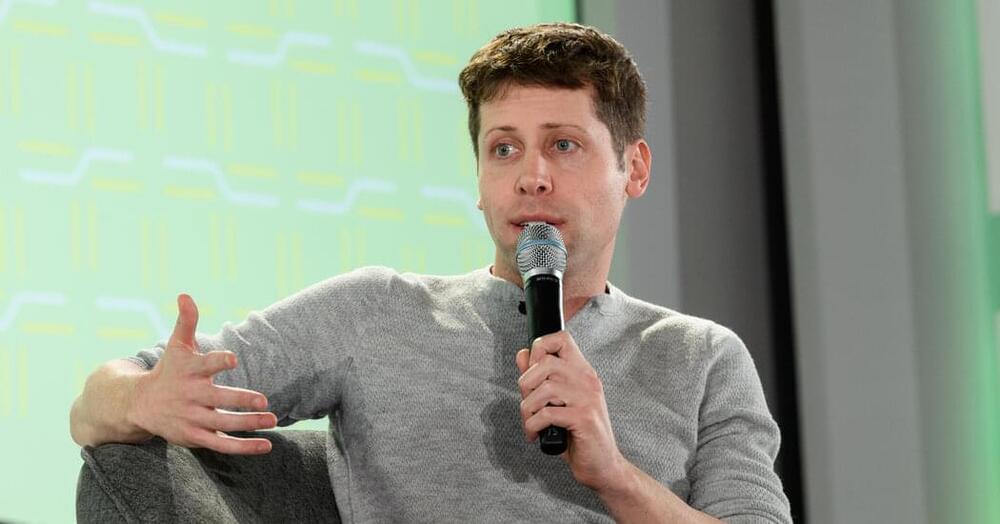Microsoft has revealed the tactics used by KeRanger, FileCoder, MacRansom, and EvilQuest, all targeting macOS systems.



Aging appears to progress similarly across species, from worms and flies to mice and humans, and involves pathways related to early development. Guest Linda Partridge talks with Gordon while visiting the Buck Institute to discuss the evolutionary trade offs of aging mechanisms, the role of nutrient-sensing pathways, and how we might get the most benefit from preventative interventions in midlife.
Linda Partridge, born in 1950 in Bath, England, studied and graduated in biology at the University of Oxford. After three years of postdoctoral research at the University of York, she was Demonstrator, Lecturer, Reader and finally Professor at the University of Edinburgh. After many years in Scotland, in 1994 she became Professor of Biometry, University College London. She is both a founding director of the new Max Planck Institute for Biology of Ageing in Cologne and Director of the UCL Institute of Healthy Ageing. Linda Partridge’s research is directed to understanding both how the rate of aging evolves in nature and the mechanisms by which healthy lifespan can be extended in laboratory model organisms. Her work has focussed in particular on the role of nutrient-sensing pathways, such as the insulin/insulin-like growth factor signaling pathway, and on dietary restriction.
Roger Spitz is co-author of the forthcoming book The Definitive Guide to Thriving on Disruption; President of Techistential (Global Foresight Strategy); and Chairman of the Disruptive Futures Institute. He has given over 100 keynote talks globally, and he has two decades of experience leading investment banking and venture capital (VC) businesses, advising CEOs, founders, boards, and shareholders, evaluating their competitiveness, strategic investments, and disruptions ahead. Roger’s expertise lies at the intersection of futures studies, systems thinking, and sustainable value creation.
#futurism #disruption #innovation

😗
A newly discovered comet could be visible to the naked eye as it shoots past Earth and the Sun in the coming weeks for the first time in 50,000 years, astronomers have said.
The comet is called C/2022 E3 (ZTF) after the Zwicky Transient Facility, which first spotted it passing Jupiter in March last year.
After traveling from the icy reaches of our Solar System it will come closest to the Sun on January 12 and pass nearest to Earth on February 1.

What is ChatGPT and what might it mean for higher education?
In this special Future Trends Forum session we’ll collectively explore this new technology. How does the chatbot work? How might it reshape academic writing? Does it herald an age of AI transforming society, or is it really BS?
Experts who joined us on stage includes Brent A. Anders, Rob Fentress, Philip Lingard, John Warner, Jess Stahl, and Anne Fensie.
The Future Trends Forum is a weekly discussion event created and hosted by Bryan Alexander. Since 2016 we have addressed the most powerful forces of change in academia. Each week, this video chat brings together practitioners in the field to share their most recent work and experience in education and technology. The intent of the Forum: to advance the discussion around the pressing issues at the crossroads of education and technology.
This event is powered by Shindig, the video chat event provider. On Shindig, audiences all can see one another and engage in private video chats sharing and discussing the content of the presentation. Event hosts may also bring selected audience members to the stage to ask questions or otherwise interact with guest speakers. Shindig; the dynamics of in person events, online.

In this video I discuss a new research paper which suggest a new way to cope with catastrophic forgetting in Artificial Intelligence.
#AI #NewResearch #newpaperpattern.
Links:
The Paper: https://journals.plos.org/ploscompbiol/article?id=10.1371/journal.pcbi.1010628
The Book: https://amzn.to/3jUZs1d.
The Rocket: https://amzn.to/3GkrgDt.
Support me on Patreon: https://www.patreon.com/AnastasiInTech.
My Newsletter: https://anastasiintech.substack.com

An app developed by a Princeton University student helps determine if a text is written by a human or by the artificial intelligence tool ChatGPT.
Edward Tian, a senior cs major, stated in a tweet that his algorithm, GPTZero, can “quickly, efficiently detect whether an essay or article or any text is written by ChatGPT or human.” You can download the beta version of this app here.
ChatGPT is gaining popularity for its ability to generate coherent essays on any topic in seconds. Investors are interested in the technology, according to Wall Street Journal. OpenAI parent company could soon attract investment valued at $29 billion.

In this article, let us see how to build a potential darkweb monitoring tool out of ChatGPT
The dark web is a notorious and often misunderstood part of the internet, known for its anonymous communication and the buying and selling of illegal goods and services. It is not indexed by traditional search engines and is only accessible through specialized software, such as the Tor browser.
While the dark web can be a breeding ground for criminal activity, it is also a valuable resource for cyber security firms, law enforcement agencies and cybersecurity and threat intelligence individuals looking to track and monitor illegal activities.